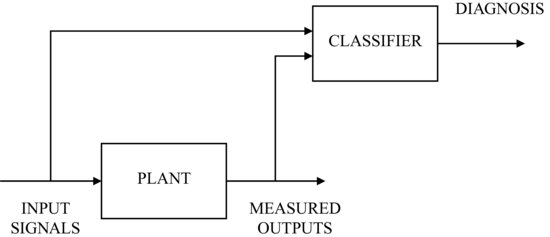13
Fault Diagnosis in Information-Poor Systems
13.1 Introduction to Fault Detection and Isolation in Non-Linear Uncertain Systems
Safety and reliability are a growing concern in modern complex processes. Process monitoring and the early diagnosis of faulty operation is increasingly important (Isermann, 2005a). Faults are non-permitted deviations of a process variable from its normal value that may lead to a failure of the system. They can be divided into three types: process (or component) faults, sensor faults and actuator faults. Some faults cause sudden changes in the plant behaviour (abrupt faults); others result in a gradual degradation of the performance (incipient faults).
An excellent summary of the terms used in fault detection and diagnosis is given by Isermann and Balle (1997). Fault diagnosis can be broken down into three stages. The first stage (fault detection) is the detection of a fault and the time of its occurrence. The second stage (fault isolation) involves determining the class of fault and its location in the process. The third stage (fault identification) involves finding the type, magnitude and cause of the fault. A system that is capable of detecting and isolating faults is often referred to as a fault detection and isolation (FDI) system.
Figure 13.1 The direct approach to fault diagnosis.

There are three basic approaches to fault diagnosis (Frank

